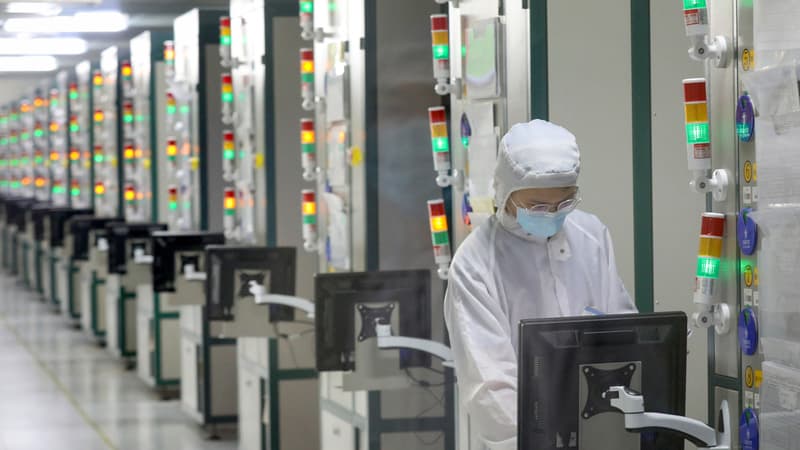The semiconductor sector sees the end of the tunnel. Largely disrupted due to the pandemic, this market segment should soon see an end to the shortage that has plagued it for nearly three years. In any case, this is one of the perspectives established by the advanced technology center of the strategic consultancy Roland Berger in its September report entitled Semiconductors: a new form of problem on the horizon? This problem implies that, despite the reassuring short-term projections, the real challenges in the sector are more structural than temporary and require a lasting response.
The telecommuting momentum has come to an end
The experts from the German firm first point out that the consumption of electronic products has fallen sharply in recent quarters after strong increases during the pandemic. To illustrate this development, Roland Berger uses the annual revenue figures generated by the semiconductor sector provided by his US counterparts from Gartner. After a 26.3% increase in revenue between 2020 and 2021, the sector should post an annual increase of just 7.4% in 2022 and then a 2.5% drop in 2023.
This negative variation is mainly due to the drop in computer purchases, which is unprecedented for almost a decade. It comes after a prosperous period of the pandemic that, in the face of the generalization of remote work, saw many manufacturing companies order chips en masse to meet demand but also to safeguard their production. Today, many of these companies have large inventories of semiconductors, reducing their demand from chipmakers.
Functioning capabilities towards their usual level
This withdrawal of demand has a direct impact on the supply of producers. According to data from the Semiconductor Industry Association (SIA), factory floors were operating at just 93% of capacity at the start of 2022 compared to nearly 97% a year earlier. Although this percentage remains well above the usual level of 80%, the Roland Berger firm expects it to approach it in the coming months. Here too, manufacturers’ semiconductor stocks have been rising steadily for nearly a year and are approaching the critical threshold of excess according to Gartner’s index.
Proof of this is the relationship between inventory and sales of 22 electromechanical systems, which has increased by almost 50% between its average for the period 2012-2019 and the year 2021 alone. The only solution to limit the harmful effects that this situation: a rapid correction of stocks. “Given the level of scarcity, double order […]we think the next inventory correction could be quite abrupt, leading to potentially larger earnings cuts […] than the bearish cycles of 2019 and 2016″, fears an analyst.
The industry and its automotive sector among the main victims
All industrial sectors and more specifically the automotive segment have been the main victims of these shortcomings due to the fact that they use more analog integrated circuits and microcontrollers of which they themselves were victims.
If manufacturers have significantly increased the capacity of small semiconductors (below 40 nanometers), they have also done so with larger ones (up to more than 450 nanometers) to respond to a rebound in demand.
An insufficient European plan
To complete its statement, the advanced technology center of the firm Roland Berger also analyzes the recent plans of the main Western powers to gain sovereignty over the semiconductor market to be less exposed to possible future supply crises. According to him, the Law of Chips and Science approved in the United States last August suffers from a short-term vision despite a large endowment of 223 billion dollars, 53 of which are dedicated entirely to chips.
The situation seems more critical for the European Union whose Chip Law does not seem to be up to the challenge with its “meager” budget of 43,000 million euros. However, the goal is to represent 20% of world production by 2030 compared to 10% today with the help of incentive schemes to attract investment in this area. Especially since Asian countries also intend to invest to become market leaders: 200 billion dollars for China and even 450 billion for South Korea.
Immediate and lasting solutions
For the German consultancy, the most urgent action is to optimize inventory management, which should allow it to maintain the right amount to face the next supply interruptions. In the long term, experts particularly suggest multiplying supply sources or even partnerships with semiconductor manufacturers.
Source: BFM TV


